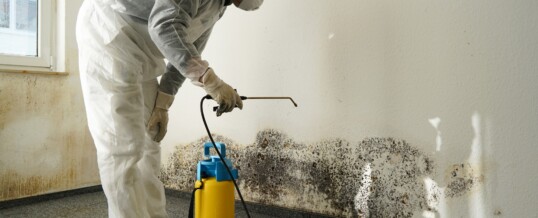
Does your home in Maryland have standing water near the foundation?
You might have tried scooping up what you can already, but the problem might have come right back. Now you know it’s time for a crawl space repair.
You should always be on the lookout for standing water around the foundation of your home. That’s because it can cause structural deterioration, promotes mold, and reduces your indoor air quality. You need adequate insulation under your house, in the form of a vapor barrier that stops moisture from rising through your home.
If you want to protect your indoor air from pollution and your home’s structure from harm, you need to deal with water damage.
We’ll explain what to look for, what to do, and who to call. Read on!
Home Inspection
If your current home has water in the crawl space, you might find it tempting to forget about it. This is the worst thing you can do, as repairs will keep getting ever more expensive as damage intensifies. What’s more, you won’t ever be able to sell your home until you resolve the problem.
Whether you inspect your crawl space yourself or get a professional to do it, you want to ensure that there is good ventilation present. Too much moisture not only leads to mold and fungi but also encourages critters like termites or rodents.
Make sure you have your crawl space inspected regularly, particularly before and after rainy and humid seasons.
If a pipe has leaked, there may be visible signs, or it might be an underground pipe that is inaccessible. Pay attention to any plumbing fixtures above the leak, such as a shower, sink, or toilet. If a sewer pipe has burst, then the cleanup should be carried out by a professional who can control the sanitation issues.
Your home inspector should check your basic structural members like columns and beams. If the wood is wet, it will swell and warp and compromise the safety of your house. It will also lead to rot, which is expensive to rectify.
Water will usually enter your home in a variety of ways, but a common route is an excess of moisture. If your crawl space usually gets wet during the summer months when the air is humid, you’ve probably got a seasonal moisture issue.
Foundation Problems
The Maryland Insurance Administration (MIA) is the state agency tasked with regulating the insurance market. The MIA points out that in 2018, more than 70 inches of rain impacted the state, with significant flooding events in Baltimore City and County. They also note that most homeowner’s policies don’t cover flooding.
If your home foundation is cracked or has gaps, it will let in water. Houses will settle over time, and damage to the foundation is not uncommon. Cracks need sealing urgently and waterproofing. To prevent future leaks, you should have a pressure relief drain system installed.
Without adequate grading, flash floods or heavy rain can drain towards your foundation. Ensure that crawl space vents are clean and clear of obstruction to enable efficient moisture control. If vents are not adequately removing moisture, electric ventilation-fans can also be installed.
Check vent wells and crawl space windows for signs of leaking. Any gaps that have developed will need to be sealed.
Drainage Issues
Unfortunately, even if you ensure that your foundation is crack-free and that windows and vents have no gaps, water can still enter during torrential rain. This would be likely to occur if your external drainage system is inadequate or is simply overwhelmed.
In areas prone to flooding, it is recommended that you have a sump pump added. If you don’t have power outlets in your crawl space, an electrician will need to install them.
A sump pump works by redirecting water drainage inside the crawl space to outside the home. To do this, water is guided to a trench (or French drain) filled with gravel, typically no closer than 8 inches to the foundation. The pump usually turns on when it detects water in the trench.
If you live in an area where the water table is high, water can rise into your crawlspace during periods with a lot of rain. Standing water, if left to rot through the structural beams of your home, could spell disaster. The repair bills can be enormous, especially if your floors collapse and walls crumble away.
Encapsulation
Your crawl space may already have an existing waterproofing system that has failed. You must identify the weakness, and the vapor barrier will need to be replaced.
Crawl space encapsulation involves installing a heavy-duty liner to keep water out. Water is blocked from entering the crawl space, and a dehumidifier can also be installed, for extra temperature and moisture stability.
If there is no standing water or puddling, but mold and mildew are everywhere, you are probably dealing with a moisture problem. Cleaning, repairing, and waterproofing your crawl space with a vapor barrier is the way to go.
Whilst it might be possible to do some of this work yourself, it’s not recommended that you go this route.
Unlike basements, crawl spaces are typically only 4-5 feet high, sometimes only 2-3ft. Heavy manual labor in a cramped physical space is hazardous work, especially if you don’t know what you are doing. When it comes to waterproofing your crawl space, mistakes can end up being extremely expensive in the long-term.
Crawl Space Repair
We’ve shown that crawl space repair is a job best left for professionals. Don’t let standing water undermine the structural integrity of your home.
If you’re a homeowner near Baltimore, MD, we can help. We are a basement waterproofing company, with 20 years in the industry. We provide foundation crack repair, crawl space encapsulation, and install window or stairwell drains.
Contact us today to schedule your free inspection.
ShareFEB
